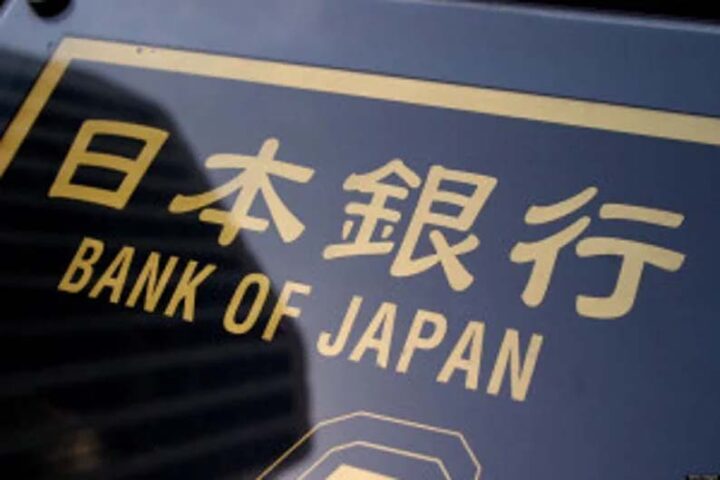By Jeffrey Halley
Things didn’t improve from overnight in New York, as the market scrambled to price in a 0.75% by the FOMC, whose two-day meeting starts Tuesday.
Among the biggest casualties was the bond market, where yields soared, and the 2/10-year tenor spent part of the day inverted; 20+ basis point increases across the curve were the norm.
Equities had another awful session, led by the Nasdaq and S&P 500, home to some of the most pimped-up valuations from the pandemic largesse. With the risk-free 10-year yield at 3.38% now and growth forecasts sure to be reigned in as the Fed moves harder on inflation, it’s hard to see that outlook improving this week.
The crypto space has been particularly hard hit with Bitcoin falling 15.50% overnight and down 5.0% to 21,370.00 Tuesday morning. Celsius suspending withdrawals on Monday gave extra downside momentum.
I’ve always been confused about how the DeFi space can conjure up 17-20% returns from crypto “lending” activities. For a start, who in their right mind would pay that rate for financing?
Two things have stuck with me over the decades though. Firstly, if something looks too good to be true, it always is. Secondly, each generation into the markets brings a tranche of bright young things saying, “this time it’s different.” In the end, it never is.
I can only assume the next big level for Bitcoin will be $20,000. It will be interesting to see if that level, should it fail, spurs another wave of cross-margin selling.
The US Dollar soared once again overnight and the dollar index, having broken out of a 5-year triangle earlier this year at 102.30, appears to be on the march again, having corrected back just below that level in mid-May.
The technical target is somewhere in the 116.00 to 117.00 area, and if the Fed is going to start hiking rates harder and for longer, it is not unreasonable to assume a prolonged period of US Dollar strength lies ahead.
Although all the focus will be on the Federal Reserve this week, for Asia, perhaps the biggest risk is the usually sleepy Bank of Japan meeting on Friday. The 10-year JGB yield cap at 0.25% has been under severe pressure this week and the BOJ is tendering to buy a lot of JGBs across the curve on Tuesday to maintain that cap.
USD/JPY sitting at 20-year highs just under 135.00, and frankly, I’m a little suspicious that the 135.00 area has capped USD/JPY these past four sessions, as the US Dollar bulldozes all before it in the currency space. I guess it could be Yen repatriation by defensive Japanese investors, but I’m not completely buying it.
Anyway, with the Yen on its knees, Japan’s imported energy bill looking uglier than ever, and 10-year JGBs edging through 0.25%, a 0.75% to 1.0% hike by the Fed on Wednesday, along with a very hawkish dot plot and statement, could be enough to get Tokyo to adjust the rate cap slightly higher. Given the weight of long USD/JPY positioning out there, we could see a very violent correction lower. Definitely, something to keep an eye on this Friday.
Asia could also get some temporary solace from China, which may choose to trim the 1-year MTF rate this week. That decision was due between June 13-16th, so that announcement could come at any time.
A perception that China is getting serious about broader stimulus could help spare Asia’s blushes temporarily. However, the greater risk in the medium term remains a return to omicron lockdowns under the covid-zero policy.
Looking ahead at Tuesday’s data calendar, Japan Industrial Production is unlikely to move the needle, with markets more focused on the JGB and stock markets.
India’s WPI Inflation for May should hold steady at 15.0% YoY and won’t be enough to shake the RBIs hawkish resolve.
Germany’s ZEW Survey will still remain negative for a plethora of obvious reasons, but slightly less so. German Inflation later Tuesday has upside risks after last Friday’s US number and could see European bonds sold once again today. Eurozone yields have shot up this week along with US ones, another headwind for the European economic outlook and the Euro.
The US releases its PPI data Tuesday evening, with May headline PPI MoM expected to rise by 0.80%, and Core MoM by 0.60%. Herein lies an opportunity for markets to catch their breath if the PPI numbers come in below those forecasts.
I don’t believe the buy-the-dippers have gone away, and softer PPI might be the chance for those 1.0% hiking expectations by the Fed we heard about so much overnight, to be pared back somewhat. It’s that sort of market and softer PPIs may bring temporary relief to equity and bond markets desperate for some good news.
Supply squeeze keeps oil elevated
Oil prices remained unchanged overnight, with Brent crude finishing at $122.10, and WTI at 121.10 a barrel. The continuing squeeze on refined products globally, as well as a lack of investment to bring online more supplies from OPEC members, or other sources, means lost Russian production is nowhere near being covered by markets.
Adding to the noise is news that Libyan production has fallen from 1.1 million bpd to just 0.10 million bpd. Not a game-changer in normal times, but with the current situation, it is enough to keep prices elevated.
In Asia, prices climbed once again as regional buyers get impatient waiting for a risk-aversion dip to arrive. Brent has climbed 0.70% to $123.95, with WTI adding 0.40% to $121.60. In the near-term, Brent has support at $119.50 and $118.50, with resistance at 123.60 and a triple top at $124.40. WTI has support at $118.00 and $117.00, with resistance at $122.25 and $123.00.
Gold slumps
Gold has once again teased gold bugs, only to whip the rug from under their feet. The huge rise in both US yields and the US Dollar was too much for gold to endure on Monday as it collapsed by 2.80% to $1819.50.
The 50-dollar-an-ounce collapse hinted that once again, the fast money longs were shown the exit door. In line with price moves in other asset classes in Asia, stability in US equity futures has prompted a 0.50% gain to $1828.25 an ounce.
The inverse correlation to the US Dollar is as strong as ever and the technical picture for gold has turned murky. Only a sharp US Dollar correction lower is likely to alleviate selling pressure on gold.
Gold has resistance at $1840.00 and $1880.00, the latter appearing an insurmountable obstacle for now. Support is at $1805.00 and then $1780.00 an ounce. Failure of the latter sets in motion a much deeper correction.
Jeffrey Halley is Senior Market Analyst, Asia Pacific at OANDA
Opinions are the author’s, not necessarily that of OANDA Global Corporation or any of its affiliates, subsidiaries, officers or directors. Leveraged trading is high risk and not suitable for all. Losses can exceed investments.







